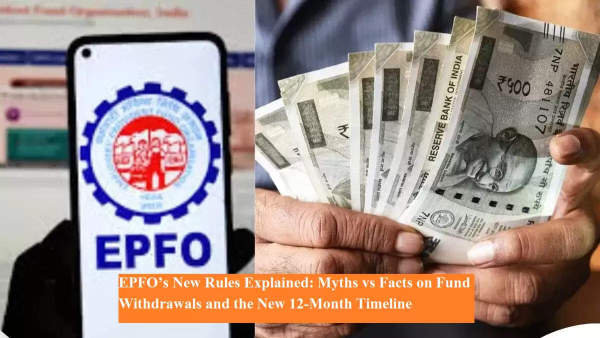
The Employees’ Provident Fund Organisation (EPFO) has introduced a major overhaul to simplify its withdrawal rules, making the process more transparent and employee-friendly. With the new changes, EPFO has reduced the earlier 13 complex withdrawal categories to just three — Essential Needs, Housing Needs, and Special Circumstances. These reforms aim to make fund access easier for employees while minimizing claim rejections and ensuring long-term financial security.
Under the new system, employees can now withdraw up to 75% of their EPF balance when they lose their job, but must retain at least 25% in their account. Earlier, the complete withdrawal could be done after two months of unemployment; now, the full balance can be withdrawn after 12 months of being jobless.
This adjustment not only helps EPFO members maintain a financial cushion during unemployment but also supports smoother pension settlements and better long-term fund management.
Fact: This claim is false. According to EPFO’s official clarification, members can withdraw 75% of their EPF corpus immediately after job loss. If the individual remains unemployed for 12 consecutive months, they can then withdraw the remaining 25%.
The move is intended to prevent frequent withdrawals, which earlier caused breaks in service records and affected pension eligibility. The revised timeline ensures continuity and helps employees preserve their retirement benefits.
Fact: Not true. The 25% portion isn’t permanently locked; rather, it is retained for a limited period to ensure that employees don’t deplete their retirement savings too early. Once the 12-month unemployment period is over, employees can withdraw the remaining amount in full.
Previously, there were 13 complicated withdrawal conditions, each requiring extensive documentation. Now, the three broad categories make it easier for employees to access funds for genuine needs.
Essential Needs: Covers personal requirements such as education, marriage, or medical emergencies.
Housing Needs: Allows withdrawals for buying, constructing, or renovating a home, as well as repaying home loans.
Special Circumstances: Enables withdrawals during exceptional cases like unemployment or disasters — and now, employees can withdraw even without specific documentation in certain cases.
This simplification drastically reduces paperwork and processing delays, ensuring quicker settlements and fewer rejections.
Earlier, withdrawals for purposes like marriage or house purchase required the member to have completed at least five to seven years of service. Now, these can be made after just one year of contribution. Similarly, education and health-related withdrawals are now more flexible, enabling members to meet urgent needs without lengthy approval processes.
EPFO has also introduced a provision allowing members to withdraw funds twice a year under special circumstances without submitting supporting documents — a move expected to significantly ease financial pressure during emergencies.
The latest EPFO update reflects a broader effort to make India’s social security systems more adaptable to changing employment patterns. With the rise of contract jobs and frequent career transitions, these simplified rules help ensure that employees maintain liquidity when they need it most, without jeopardizing their retirement savings.
In essence, EPFO’s revised withdrawal framework aims to strike a balance between financial flexibility and long-term security. By clearing up myths and making processes simpler, the organization has taken a major step toward empowering India’s workforce with better financial access and peace of mind.